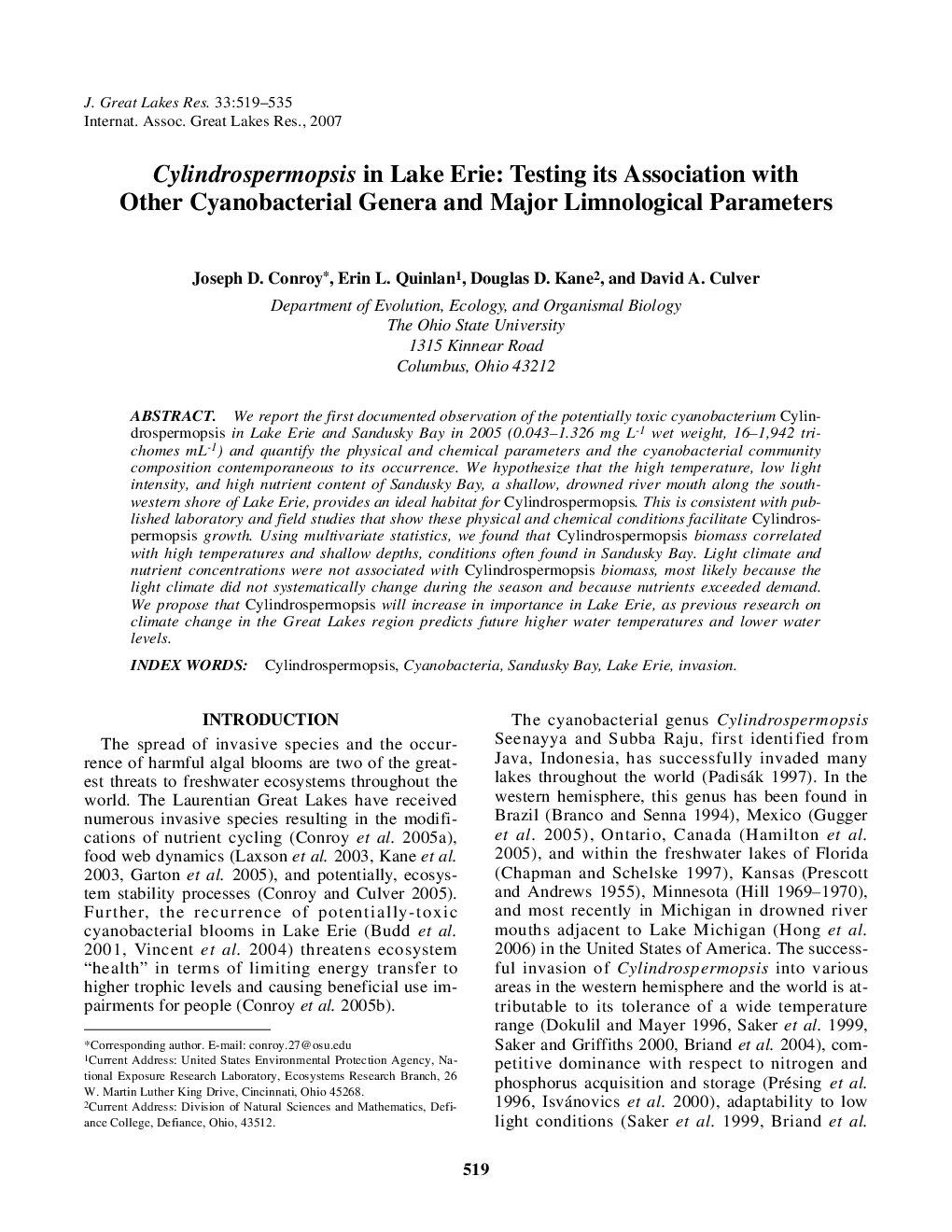| Article ID | Journal | Published Year | Pages | File Type |
|---|---|---|---|---|
| 4399425 | Journal of Great Lakes Research | 2007 | 17 Pages |
Abstract
We report the first documented observation of the potentially toxic cyanobacterium Cylindrospermopsis in Lake Erie and Sandusky Bay in 2005 (0.043-1.326 mg L-1 wet weight, 16-1,942 trichomes mL-1) and quantify the physical and chemical parameters and the cyanobacterial community composition contemporaneous to its occurrence. We hypothesize that the high temperature, low light intensity, and high nutrient content of Sandusky Bay, a shallow, drowned river mouth along the southwestern shore of Lake Erie, provides an ideal habitat for Cylindrospermopsis. This is consistent with published laboratory and field studies that show these physical and chemical conditions facilitate Cylindrospermopsis growth. Using multivariate statistics, we found that Cylindrospermopsis biomass correlated with high temperatures and shallow depths, conditions often found in Sandusky Bay. Light climate and nutrient concentrations were not associated with Cylindrospermopsis biomass, most likely because the light climate did not systematically change during the season and because nutrients exceeded demand. We propose that Cylindrospermopsis will increase in importance in Lake Erie, as previous research on climate change in the Great Lakes region predicts future higher water temperatures and lower water levels.
Related Topics
Physical Sciences and Engineering
Earth and Planetary Sciences
Earth and Planetary Sciences (General)
Authors
Joseph D. Conroy, Erin L. Quinlan, Douglas D. Kane, David A. Culver,
